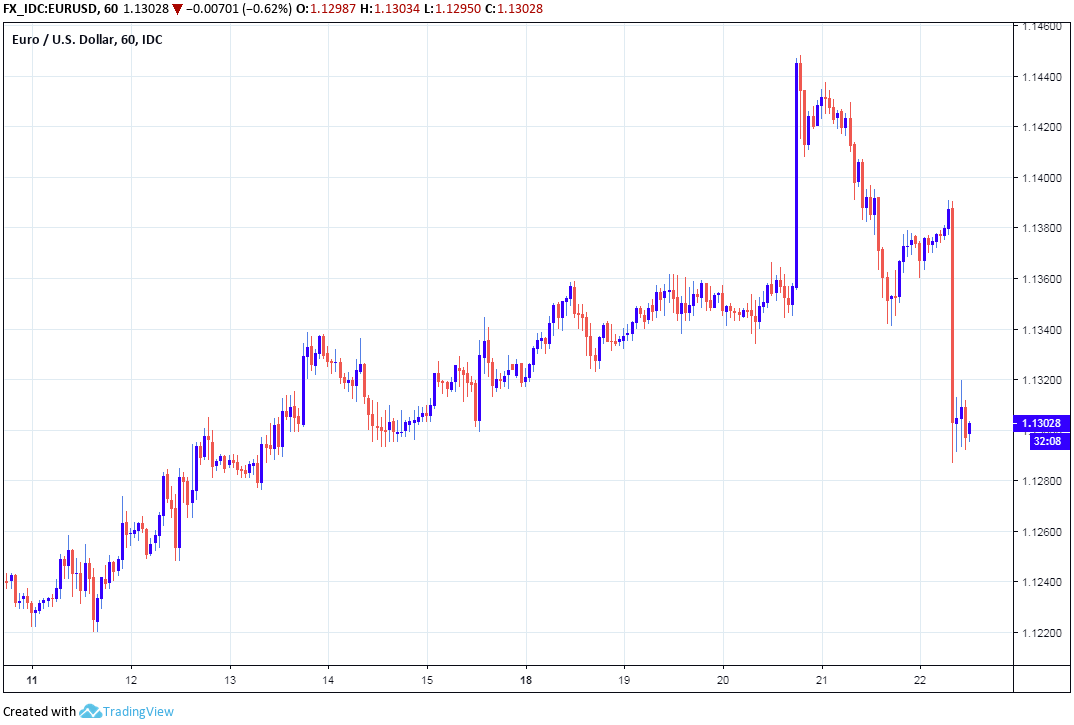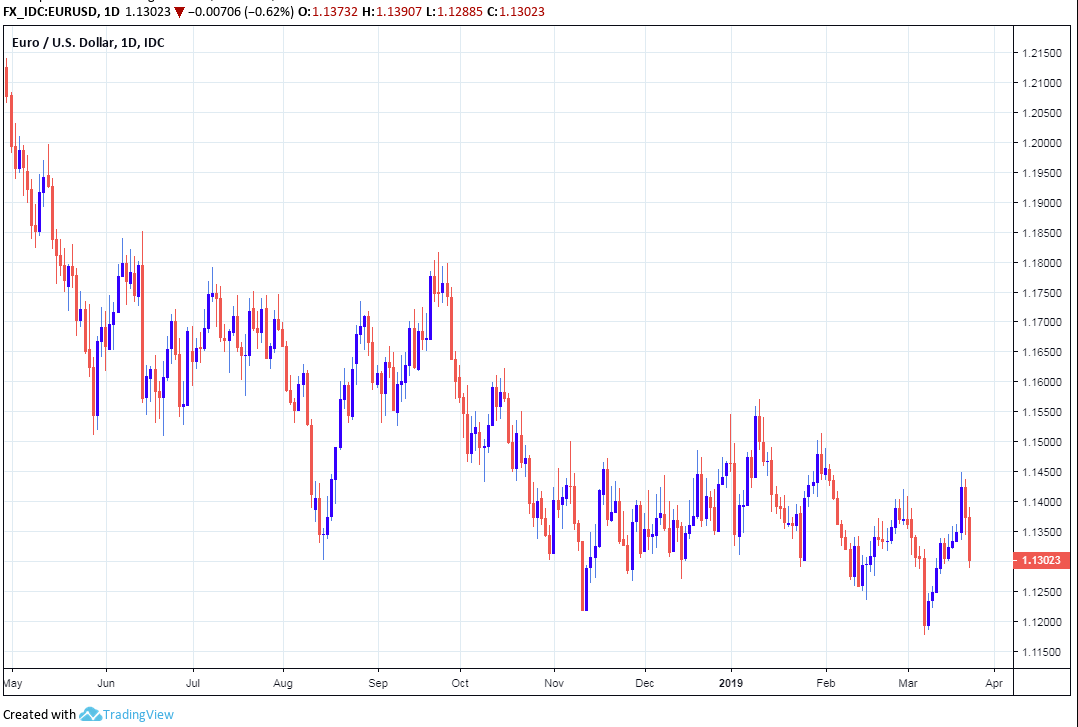EUR/USD Outlook Sours Further after PMI Weakness Sees Market Eye Key Pivot Level

© Christian Müller, Adobe Stock
- EUR slides after PMIs show bloc's trade woes continued in Feb.
- EUR manufacturers slip deeper into recession, services resilient.
- Vindicates ECB for rate shift, EUR eyes key pivot point on charts.
The Euro weakened notably on Friday after IHS Markit PMI surveys revealed a likely contraction in manufacturing output and a slowdown in service sector activity that has reinforced the negative outlook for the bloc's economy and single currency.
The manufacturing PMI fell to 71-month low of 47.6 for the month of March, down from 49.3 in the previous month. This undershot the consensus, which had put the figure higher, at 49.5. The services PMI fell to 52.7, from 52.8 previously, which was in line with the consensus.
The Eurozone composite PMI, which is a combination of the two others, fell from 51.9 previously to 51.3 in March. A result under 50 is consistent with recessionary conditions, while a number above suggests industry expansion.
"The small dip in the EZ composite PMI in March doesn’t change the story of stabilisation. The index fell to 51.1 in December, and has since been between 51 and 52, reversing the steady decline through most of last year. The details, meanwhile, tell a story of a deepening recession in manufacturing, amid resilience in services," says Claus Vistesen, chief Eurozone economist at Pantheon Macroeconomics.
The main cause of March's depression of manufacturing activity was a fall in new orders to factories, especially new export orders. This and “a gloomier outlook" also led to reduced hiring intentions last month.
"Employment growth consequently slowed, down to the joint-weakest since September 2016, as increasing numbers of companies reviewed their payroll requirements in the light of reduced workloads,” says IHS Markit.

Above: PMI survey correlation with Eurozone real GDP growth.
Markets care about PMI surveys because they are normally, although not always, a good leading indicator of GDP growth. Eurozone GDP growth slowed sharply in 2018, prompting the European Central Bank (ECB) to abandon plans to raise its interest rate once "through the summer of 2019".
That capitulation was necessary because slower economic growth means it could take even longer for Eurozone inflation to sustainably meet the ECB's target of "close to but below 2%".
Markets normally take the "core" measure of inflation as the better indication of true price pressures in the economy. That measure is currently at 1% and has not been above 1.2% at all in the last six years. It was 1.3% in March 2013.
“Most worrying is the plight of the manufacturing sector, which is now in its deepest downturn since 2013 as trade flows contracted at the sharpest rate since the debt crisis-ridden days of 2012. The service sector is showing more resilience, notably in Germany, but remains in one of its worst growth patches since 2016,” says Chris Williamson, chief business economist at IHS Markit.

Above: Euro-to-Dollar rate shown at hourly intervals.
The Euro-to-Dollar rate was quoted -0.61% lower at 1.1304 following the report on Friday and has now declined -1.4% for 2019, after posting a near-5% loss back in 2018.

Above: Euro-to-Dollar rate shown at daily intervals.
Pound Sterling Live technical analysis of the charts suggests there could be further losses ahead for the Euro-to-Dollar rate in the short-term at least, with price action around a key pivot level now likely becoming a focus point for traders.
.png)
Above: Euro-to-Dollar rate technical analysis. Pound Sterling Live.
The pair has rotated at the top of a falling channel and looks to be entering a new short-term down-cycle.
The market has broken below the 50-day moving-average (MA) at 1.1350, but whether it has decisively broken below it is still unclear at this point. We will not know for sure until the end of the day when the session closes. If by then the market is still below the MA then the above will be a decidedly bearish signal.
A continuation down to the 1.1217 November 2018 low is possible over the next few trading days, as the channel continues zig-zagging lower. The S1 monthly pivot at 1.1240 may act as an impediment to the bears though.
As the name suggests, this can be the location for dramatic reversals, or ‘pivots’. Yet ultimately it is not such a tough floor as to negate the overall increasingly bearish picture, and the bottom of the channel at the November lows still beckons temptingly.
Time to move your money? Get 3-5% more currency than your bank would offer by using the services of foreign exchange specialists at RationalFX. A specialist broker can deliver you an exchange rate closer to the real market rate, thereby saving you substantial quantities of currency. Find out more here.
* Advertisement




